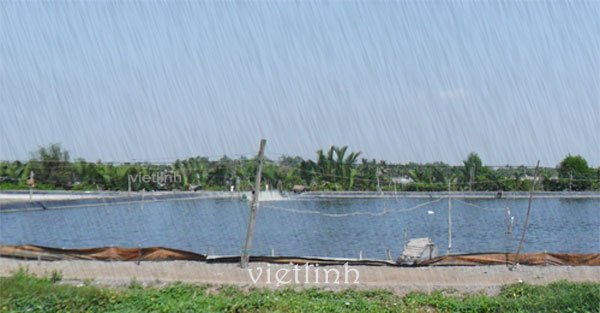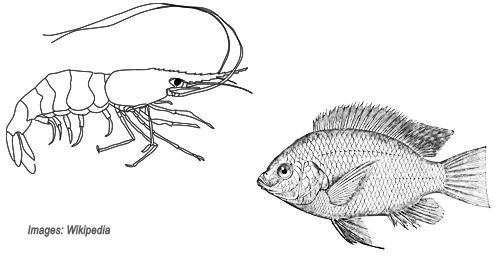Management of Shrimp Ponds with Minimal Water Exchange
In shrimp farming models with little or no water exchange, organic waste tends to accumulate at the bottom of ponds over time due to the absence of flushing. Therefore, it is essential to prevent this waste from being stirred, as doing so can degrade water quality, reduce dissolved oxygen levels, and release toxic substances.
Studies indicate that regularly removing waste during the production cycle—by pumping it out—is an effective strategy to prevent suspended solids from dispersing into the water column.
Pond Cleaning Between Crops
Between production cycles, ponds must be thoroughly cleaned to remove residual waste and maintain organic matter at minimal levels. In ponds with highly porous soils, organic material may build up over time due to seepage, which carries organic compounds into the substrate. Using pond liners can significantly reduce this problem by limiting infiltration.
Annually, ponds should be completely drained to remove waste accumulated in settling basins and drainage canals. If not fully eliminated, this organic load will contribute to nutrient buildup, increasing the risk of pond drying and degradation.

Water Quality Monitoring
It is recommended to monitor key water quality parameters regularly:
- Dissolved oxygen (DO) and pH: Measure twice daily.
- Ammonia (NH₃) and water transparency: Measure daily.
Routine monitoring allows early detection of unfavorable changes, enabling timely interventions and improving farm management efficiency.
Aeration
Ponds with high levels of organic matter require effective aeration. Low water exchange models should utilize a combination of short-arm and long-arm paddlewheels. Additionally, reservoir ponds should be aerated to promote microbial activity, which helps reduce excess nutrients in the system.
pH Control
Buffering capacity in pond water can be enhanced by applying lime at the start of the crop. However, excessive lime application—especially during the first month—can result in elevated pH levels. Therefore, lime use must be carefully controlled and monitored.
Plankton Management
In ponds with little to no water exchange, plankton populations can be managed by:
- Temporarily stopping aeration.
- Applying small doses of insecticide or BKC (benzalkonium chloride) at concentrations of 0.1–0.5 mg/L in one corner of the pond.
BKC works by oxidizing organic matter and is gradually neutralized in the environment. At low concentrations, it does not harm pond ecosystems. However, avoid using it when pond pH is high, as decomposing plankton can release harmful gases such as NH₃. Formalin can also be used to control algae and lower pH, which helps reduce ammonia toxicity.
These chemical treatments are effective in managing certain types of brown or dark red algae. When aeration is stopped in the afternoon, algae will float to the surface. Wind or paddlewheel movement can then help concentrate algae into a specific area, allowing for easy removal.
© 2016 Viet Linh






